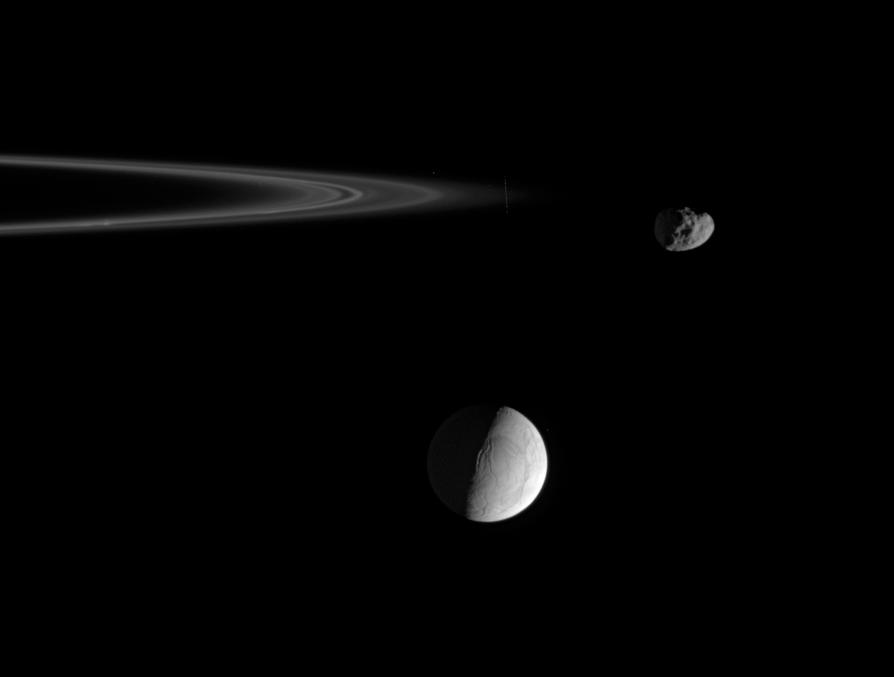Moons of Interest

| PIA Number | PIA08207 |
|---|---|
| Language |
|
Wrinkled and cracked Enceladus hangs in the distance as the pitted ring moon Janus, at right, rounds the outer edge of the F ring.
Enceladus (505 kilometers, or 314 miles across) is remarkable for its actively venting south polar region, while Janus (181 kilometers, or 113 miles across) is known for its orbital swap with the moon Epimetheus.
The bright core of the F ring is perhaps 50 kilometers wide and contains numerous clumps and kinks. Dimmer, flanking ringlets on either side of the core wind into a tight spiral structure, discovered in Cassini images.
The image was taken in visible light with the Cassini spacecraft narrow-angle camera on May 21, 2006 at a distance of approximately 565,000 kilometers (351,000 miles) from Janus, 702,000 kilometers (436,000 miles) from Enceladus and 530,000 kilometers (329,000 miles) from Saturn. Image scale is 3 kilometers (2 miles) per pixel on Janus and 4 kilometers (2 miles) per pixel on Enceladus.
The Cassini-Huygens mission is a cooperative project of NASA, the European Space Agency and the Italian Space Agency. The Jet Propulsion Laboratory, a division of the California Institute of Technology in Pasadena, manages the mission for NASA's Science Mission Directorate, Washington, D.C. The Cassini orbiter and its two onboard cameras were designed, developed and assembled at JPL. The imaging operations center is based at the Space Science Institute in Boulder, Colo.
For more information about the Cassini-Huygens mission visit http://saturn.jpl.nasa.gov . The Cassini imaging team homepage is at http://ciclops.org .
Credit: NASA/JPL/Space Science Institute
